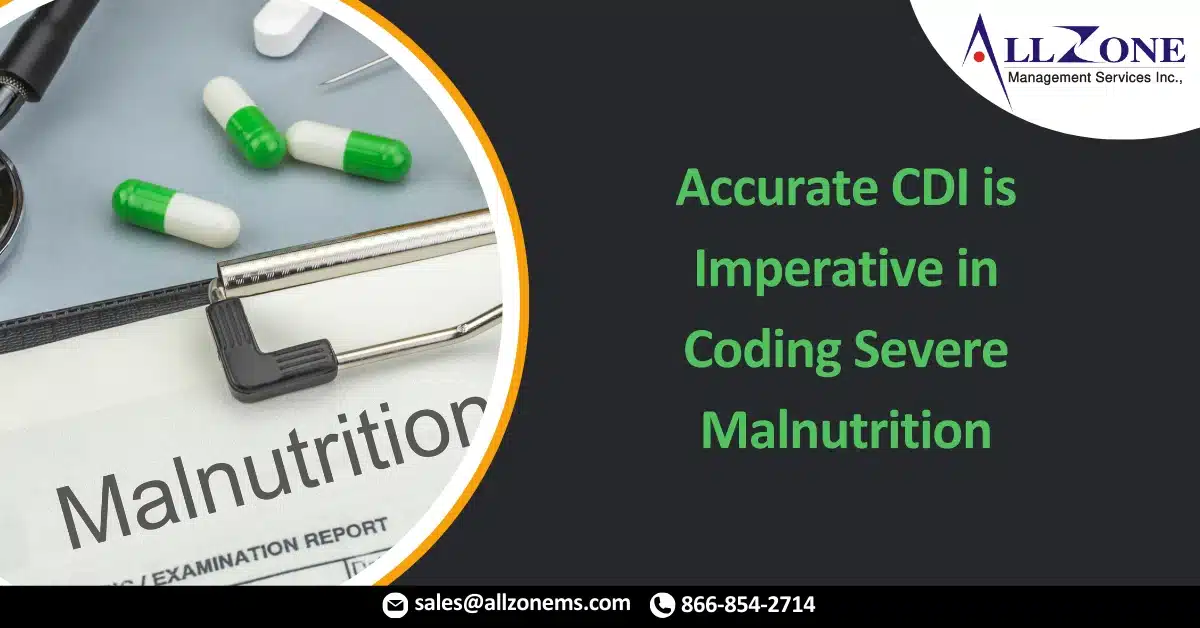One billion dollars is a big number, but more astounding to me, as it pertains to a recent finding by the U.S. Department of Health and Human Services (HHS) Office of Inspector General (OIG), was that hospitals were found to have incorrectly documented and/or coded severe malnutrition 86.5 percent of the time (173/200)! That’s almost unimaginable.
The examples given by the OIG allude to the fact that, in addition to auditing whether the diagnosis of “severe malnutrition” was actually documented by a hands-on provider, there was also attention given to clinical validation – specifically, in the context of the effect on patient care. Unfortunately, there was no mention in the full report of exactly what clinical standards were utilized beyond the coding guidelines of monitoring, evaluation, treatment, impact to nursing care, or length of stay.
In 2017, many of us in clinical documentation improvement (CDI) invested significant time and resources on malnutrition validation processes. This was driven not only by the OIG work plans at the time, but actual reports of recovery audits, as well as managed care denials.
It is time to dust off those policies and processes and make sure we are compliant and consistent. The first step is to circle back with your institutional experts – the registered dietitians (RDs). They are likely utilizing the 2012 American Society for Parenteral and Enteral Nutrition (ASPEN) criteria, but since the Global Leadership Initiative on Malnutrition (GLIM) criteria came out in 2018, it is worth revisiting. Renewed physician education is likely necessary, making sure to focus on the clinical significance documentation. Don’t forget to show your physicians, CDI specialists, and coders where they can find the RD notes in the medical record.
In addition to standardization and education, consider monitoring the incidence of malnutrition documented. This often parallels educational efforts. For CDI programs, audit your nutritional queries for compliance, and track the volume of malnutrition validation queries. If you see an uptick in the validation queries, you may need to perform focused education for identified providers.
If you are planning retrospective chart reviews, identify similar claims to what the OIG audited – patients with severe malnutrition as their single major complication or comorbidity (MCC). Random selections are ideal if you have the time and resources, but if I was looking to find the charts at highest risk for not having documented clinical criteria or significance, I would focus on patients with a shorter length of stay than expected.
If you assist with clinical validation denials, engage your dietary leadership in writing appeals. Collect evidence-based articles that support the clinical significance of malnutrition on morbidity and mortality in hospitalized patients. You can use these in your appeal letters, as well as in peer-to-peer appeals.
Malnutrition is a serious diagnosis that impacts every aspect of a patient’s health and care. It is not just a symptom of disease, and it can be independently treated with success.
When all is said and done, CDI owns the question, and providers own their answer; however, the penalties are steep if we don’t hardwire a mechanism to ensure accuracy.
For More Information: https://www.icd10monitor.com/accurate-cdi-is-imperative-in-coding-severe-malnutrition

